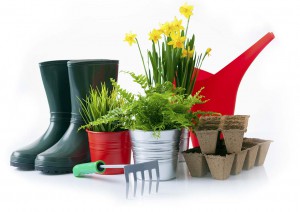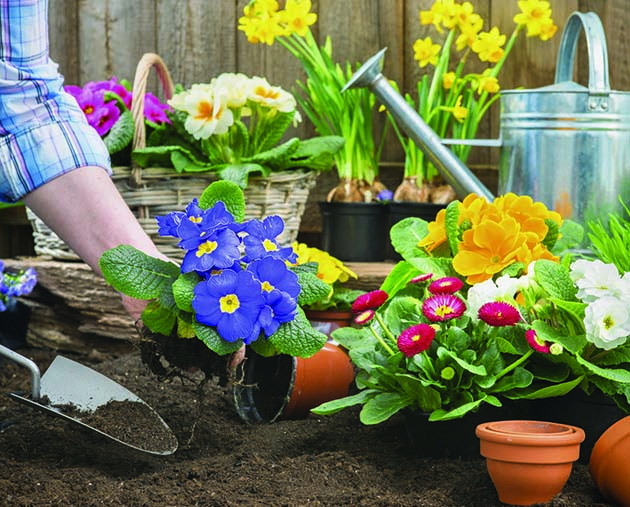By Vicki Spencer
 Many of us begin to feel cabin fever in February. Abundant sunshine and occasional spring-like temperatures tempt us to spend more time outdoors. As much as we are tempted, it’s still too early to begin gardening. The days are short, nighttime temperatures still dip below freezing and there’s no telling how much snow may fall before the gardening season finally arrives. Don’t feel discouraged. Whether you are dreaming about a garden filled with flowers or vegetables, February is the perfect time to turn your dreams into a plan.
Many of us begin to feel cabin fever in February. Abundant sunshine and occasional spring-like temperatures tempt us to spend more time outdoors. As much as we are tempted, it’s still too early to begin gardening. The days are short, nighttime temperatures still dip below freezing and there’s no telling how much snow may fall before the gardening season finally arrives. Don’t feel discouraged. Whether you are dreaming about a garden filled with flowers or vegetables, February is the perfect time to turn your dreams into a plan.
Plans are important because the first step to successful gardening is to plant the right plant in the right place. But how do you know what is right? Three things to consider are climate, soil and water.
Different plants thrive in different climates. For example, plants that grow in Colorado’s eastern plains may not grow well in the high country. Hardiness zone maps are a handy tool for identifying which plants will grow in your area, but you need to exercise caution when using them because not all maps account for the complexities of Colorado’s varied altitude and terrain. The USDA published some good maps at planthardiness.ars.usda.gov.
In addition to regional climate differences, you might also have microclimate differences in your own backyard. For instance, a southern facing garden between your house and the driveway might be significantly warmer than a western-facing garden shaded by large willow trees. The next time a warm day beckons, walk around your yard and survey the terrain. Do you see slopes or depressions in the landscape? Are there areas that get more sunshine or appear drier than others? Make note of these differences for your plan.
In addition to noting climate, it is also important to identify your soil type. Because Colorado is a semiarid state and has less vegetation than Eastern states, our soils have less organic matter. Front Range soils tend to be heavy clay. Other soils, where the water table is near the surface, may have a lot of alkali content. This is why rhododendrons are so difficult to grow in Colorado. They prefer acidic soil to our heavy clay.
You can try to improve nutrients in your soil by adding organic matter, but it is unlikely that you will be able to change soil structure. As my mother used to say, “There is no sense in fighting Mother Nature.” You will have more success if you know your soil type and choose the right plants. If you don’t know what kind of soil you have, you can get it tested by Colorado State University for a small fee. This soil analysis can provide valuable baseline information for the beginning as well as the seasoned gardener. For more information, go to soiltestinglab.colostate.edu.
The third factor to consider is how much water the plants will need. Plants with low moisture requirements are your first defense against Colorado’s dry summers and local water restrictions. Perennials with silvery foliage, such as Russian sage and yarrow, are wise choices for our climate. Sedum is also a good choice as it comes in various colors, textures and heights, adding interest to your garden.
After considering climate, soil and water conditions, you are ready to draft your plan. Some people like using graph paper to draw designs scaled to actual dimensions of their garden areas. But you can also use plain paper and create a rough drawing with circles representing areas with different terrain, soil or water conditions. For a sloped area that doesn’t retain water, you might sketch a rock garden with soil-hugging ground cover such as ice plants and drought-resistant succulents such as yucca. Or, if you have a shady area under a deciduous tree, you might want to plant hostas, coleus, impatiens and wax begonias. The main thing to remember is to avoid locating plants with different sun, soil and water requirements next to one another.
The design phase is where you can really have fun. Books, magazines, the Internet and your local garden center provide a wealth of information about plants compatible with your climate, soil and water conditions. You can be creative whether designing your garden on the computer or by clipping and pasting photos onto paper. Either way, a plan can help you visualize what your garden will look like in full bloom. Before you know it, winter will be over and you will be ready to start gardening this spring.
Vicki Spencer is a master gardener with a long and varied background. A Colorado native, she helped start the Mayor’s Community Garden Program in Denver in the 1970s. She more recently gardened in the high country of Gunnison County.

